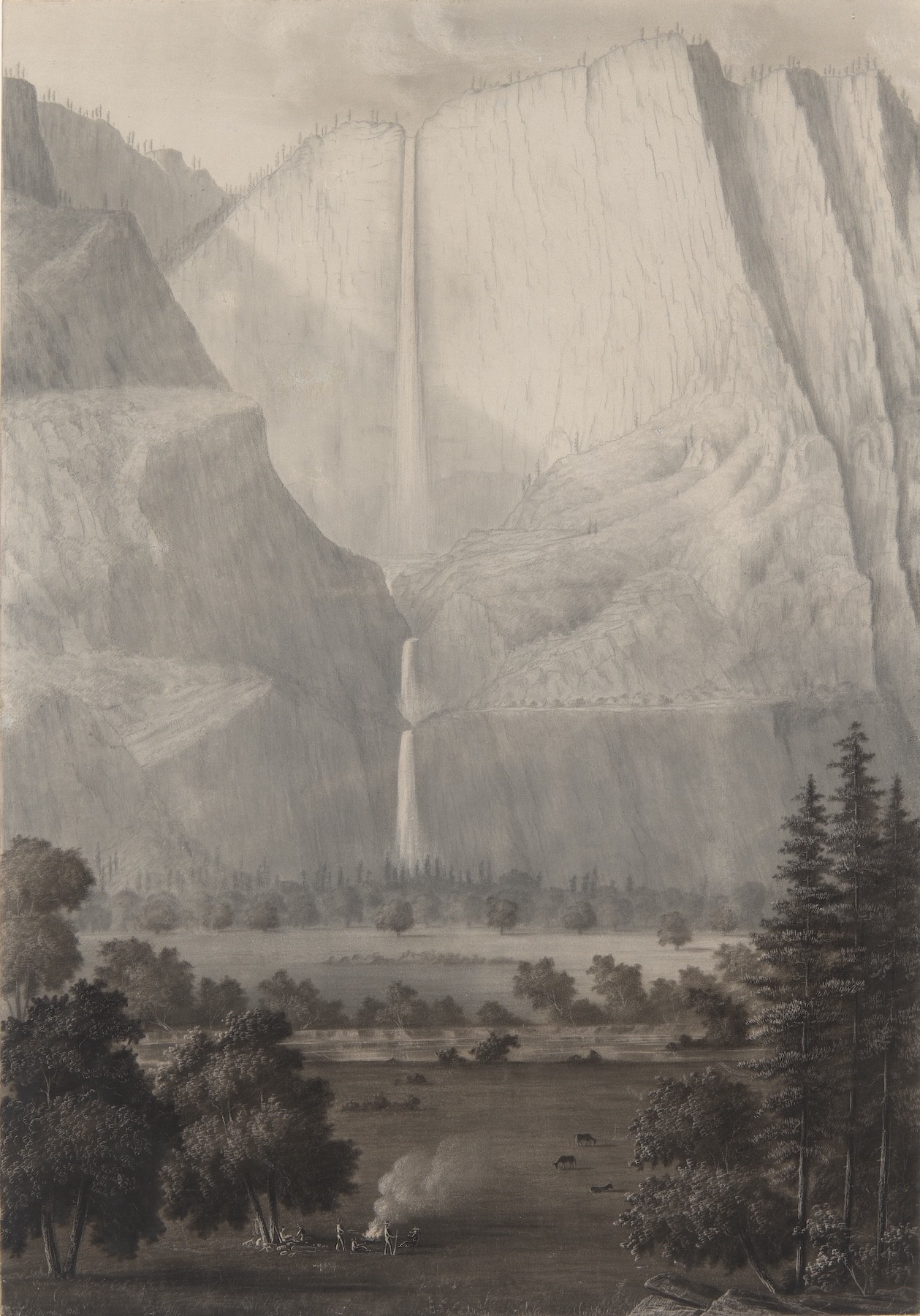the first view of Yosemite: original drawing of an iconic American view
(YOSEMITE.) Ayres, Thomas A.. “The High Falls / Valley of the Yo Semity California. Drawn from nature by Thos A Ayres 1855.”
Ayres, 1855
19 ¾ x 13 ⅞ in. Chalk and charcoal on paper. The original manuscript caption and Ayres’s signature are preserved from the original mount. They state, “drawn from nature by Thos A Ayres 1855” and “The High Falls / Valley of the Yo Semity California.”
This is an original drawing of an iconic American view. Ayres’s view of Yosemite Falls is the basis for the first published image of Yosemite. This image introduced the American public to the wonders of the Yosemite Valley and is among the most famous and most seminal works of art of the American West.
Thomas A. Ayres came to San Francisco during the Gold Rush in August 1849 and made drawings in the mines and elsewhere in California. In June 1855 Ayres accompanied James M. Hutchings, Walter Millard, and their two native guides to verify stories of a 1000-foot waterfall in the Yosemite Valley. The party spent four days in the area, and Ayres drew several images. In California on Stone Peters notes that Ayres’s drawings, “made on the spot, have artistic merit and place Ayres in the front rank of draftsmen of the period.” The pioneering California artist was lost at sea on the Laura Bevan en route from San Pedro to San Francisco in 1858.
At the center of this magnificent view are the spectacular Yosemite Falls flanked by the immense cliffs. On the valley floor we see the artist, his companions, and their horses near the Merced River. “The figures of the men and horses–and even the gigantic evergreens of the area–serve an artistic purpose in indicating the overpowering scale of the granite cliffs” (Deak, Picturing America 701).
The drawing is closely related to both the Huntington’s drawing by Ayres and the Yo-Hamite Falls lithograph published by Hutchings in San Francisco in October 1855, but it differs in a number of respects. For example, our drawing does not have the three large trees in the foreground pointing up toward the falls, as seen in both the Huntington drawing and the lithograph. Likewise, the present drawing shows a double tree just to the left of the human figures in the foreground, while the Huntington drawing and the published print show a single tree. Hutchings is known to have worried that elements of Ayres’s original drawing lacked the drama his commercial venture required. The addition of the huge trees pointing to the falls seems likely to have been one of the improvements Ayres offered in the version used for the print. The drawing has been expertly restored and conserved by Diane Tafilowski.
This is a rare opportunity to acquire an iconic work of art of the American West, a defining view of Yosemite’s beauty and immensity by the first artist to witness it.
References: Kruska, Thomas Almond Ayres, pp.11-17. Kruska, James Mason Hutchings of Yo Semite, pp. 36-49 and item 22. Peters, California on Stone, pp. 45-46. Deak, Picturing America 701.
$95,000



